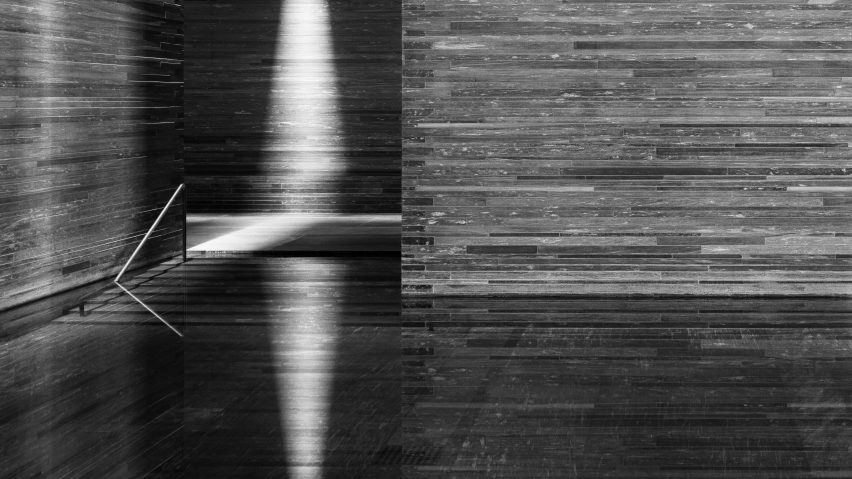
Ten Hélène Binet photographs that capture light and shadow in architecture
Photographer Hélène Binet and co-authors Marco Iuliano and Martino Stierli have selected ten highlights – from architect Peter Zumthor's Therme Vals to the Pantheon in Rome – from a new book about Binet's work.
The book features more than 170 photographs from Binet's career and includes two critical essays based on in-depth interviews.
It is the first time the photographer has discussed her work as a whole, in terms of recurring themes, techniques and how it is evolving.
Binet, who has always worked in analogue film formats, began her career at the Architectural Association in the 1980s at a time when she encountered architects who would go on to global success.
The first essay, Becoming Binet, is written by Italian architect and academic Iuliano and covers Binet's life, her work and the architects she has collaborated with – such as Daniel Libeskind, John Hejduk and Zaha Hadid.
The second essay, written by MoMA curator Stierli and titled Positioning Binet, explores how Binet's oeuvre "oscillates between two obsessions: a desire to translate spatial phenomena into two-dimensional images and a quest to articulate the modulation of light on a surface".
Published by Lund Humphries, this book is the first in an Architectural Photographer series that will "celebrate talented architectural photographers and bring them out of the 'shadow' of architects and their work," according to Iuliano.
Read on for 10 highlights from Hélène Binet's new book, selected by Binet, Iuliano and Stierli:
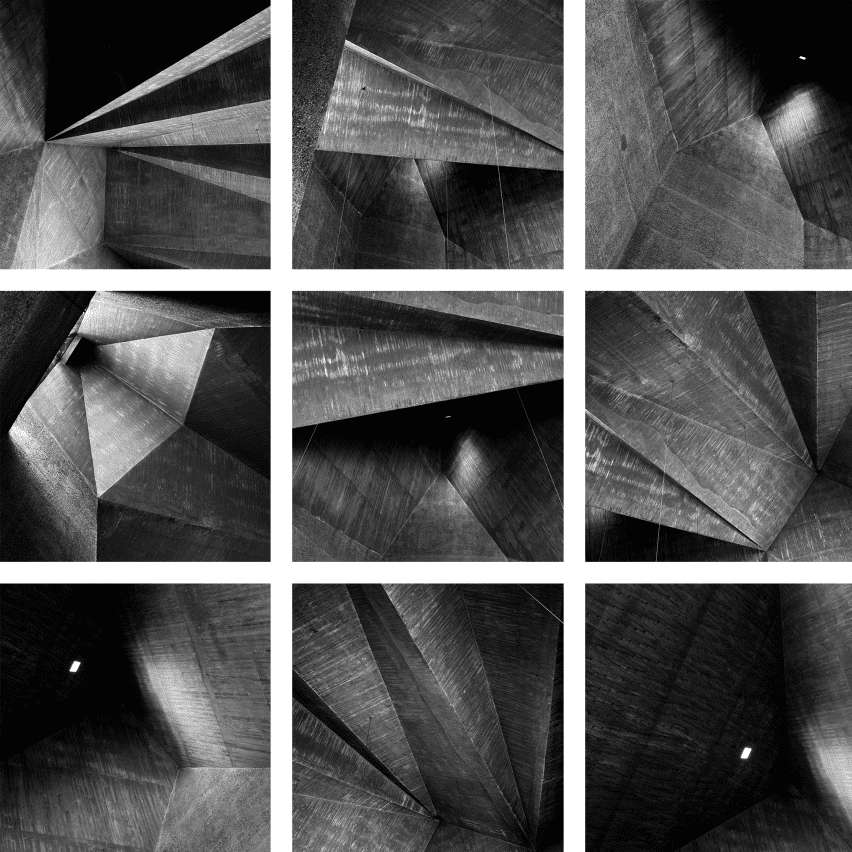
Nine views of the Parish Church of St Gertrude, Düsseldorf, Germany, by Gottfried Böhm
"I was asked to photograph a selection of early ecclesiastical buildings by Böhm to celebrate his 100th birthday in 2020," Binet told Dezeen.
"I had a great amount of freedom, because if you work for somebody that is 100 years old, he doesn't think about his future career or anything – you can just celebrate the work.
"I've always been fascinated by the different life that concrete can have, and the formation of this material can feel so soft or strong or heavy or overwhelming, or human and unhuman – it's everything. But also Böhm gave it a sense of great freedom.
"I think the concrete is treated very differently: sometimes it's rather masculine and strong, and in other moments it's so delicate that you don't know if you're looking at origami or concrete. I like that.
"I like that feeling that, especially in churches, you're going to be surprised and you're going to have to find your own space inside the church through that freedom or use of the concrete, which is somehow a liberation because it is a sacred place, but it's not, doesn't tell you what you have to believe. It tells you you have to be spiritual."
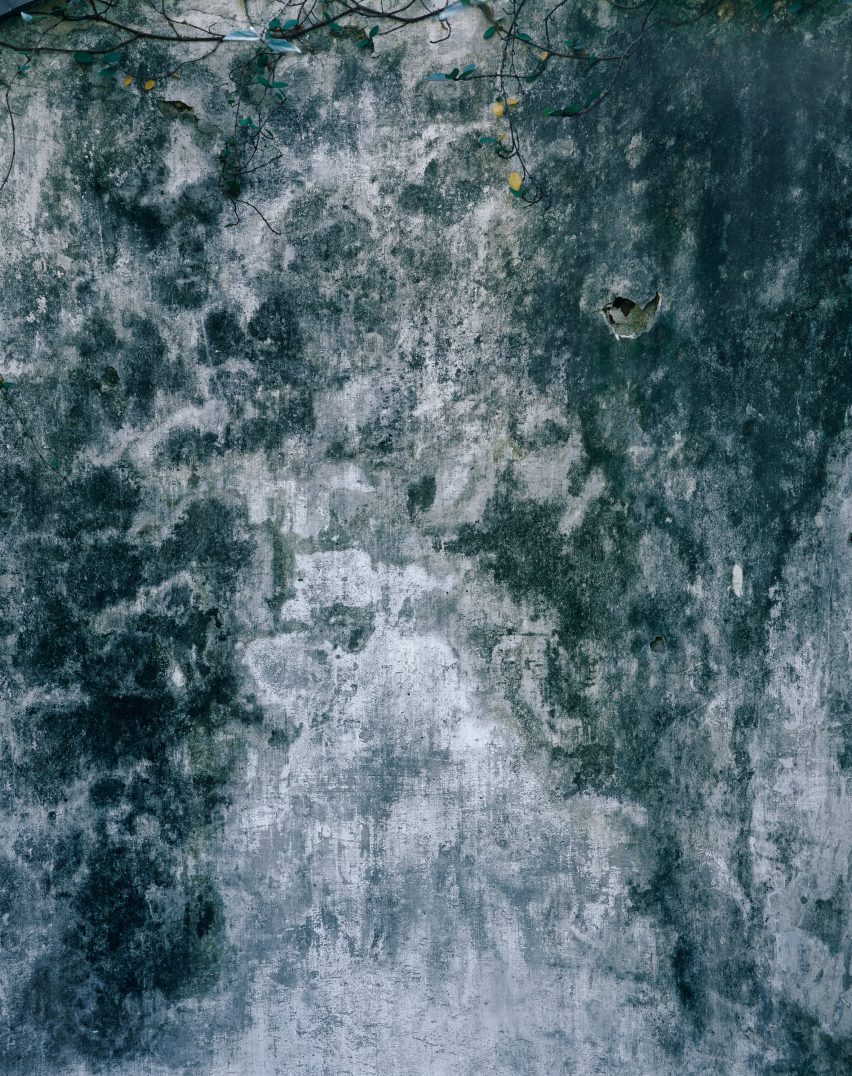
Humble Administrator's Garden, Suzhou, China
"In 2018, I decided to photograph gardens that I had visited before and thought there's great potential there," Binet said.
"Those gardens have very specific walls – the way they are somehow peeling in and out, and their relationship with the city.
"I didn't expect to find this micro-world on the wall; the moss and the lichen, which create this landscape. The wall is very pictorial, the way the growth is moving through the surface reminds me of Chinese paintings.
"You see the elements; water, wind, earth – it's quite intense, on just one surface. And so I made the pictures in colour to keep the sense of life."
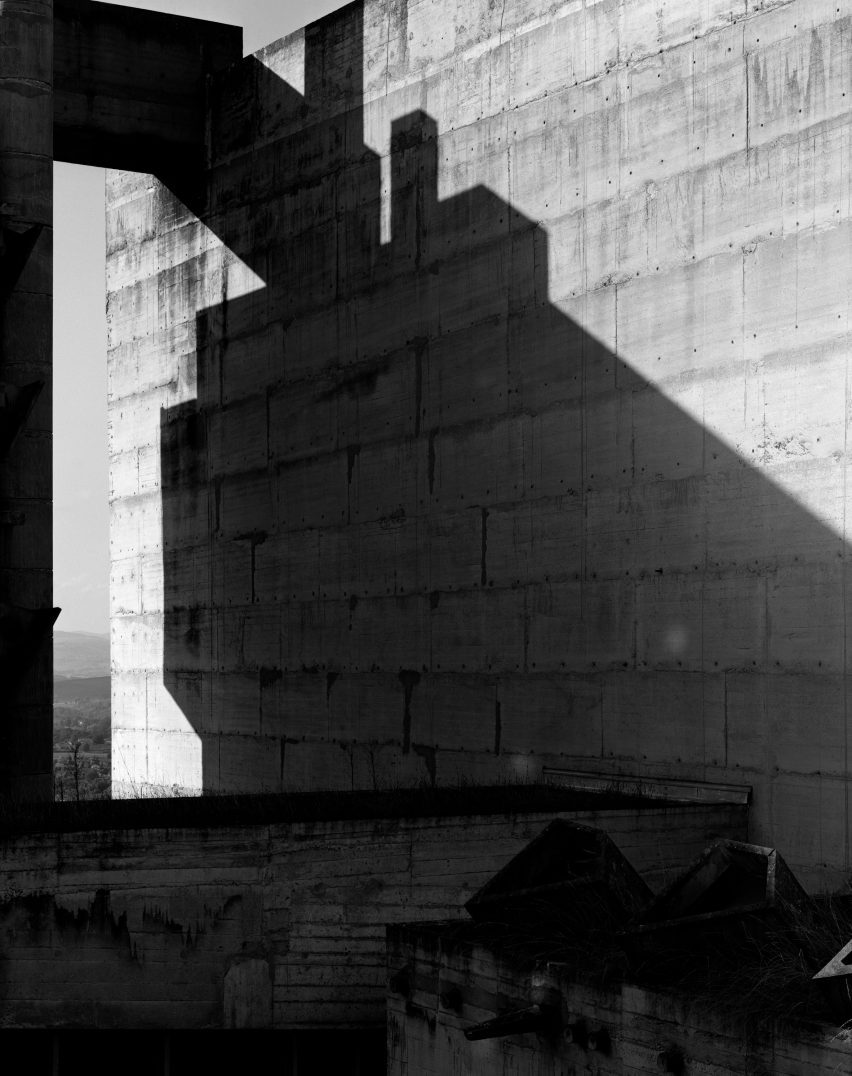
Convent Sainte-Marie de la Tourette, Éveux, France, by Le Corbusier
"The topic of shadows and light has been really important in my work," Binet explained.
"For this project in 2002, I was invited to do something on this theme and I thought 'where would I found the most rich articulation of different types of shadows?' And it was at a monastery, of course, because you have also the function: the spiritual, the practical, the social.
"To be able to photograph a building of that beauty by Le Corbusier had always been a dream. So it was a big day – and I chose quite a 'dry' space, thinking 'let's see what are the shadows that take you to a corridor or a staircase'. Spaces where you are between two functions, that take you to the spiritual place.
"In this image, you can play with interpretation because shadows can be a source of knowledge, but they are also an absence of energy, which is not to say silent."
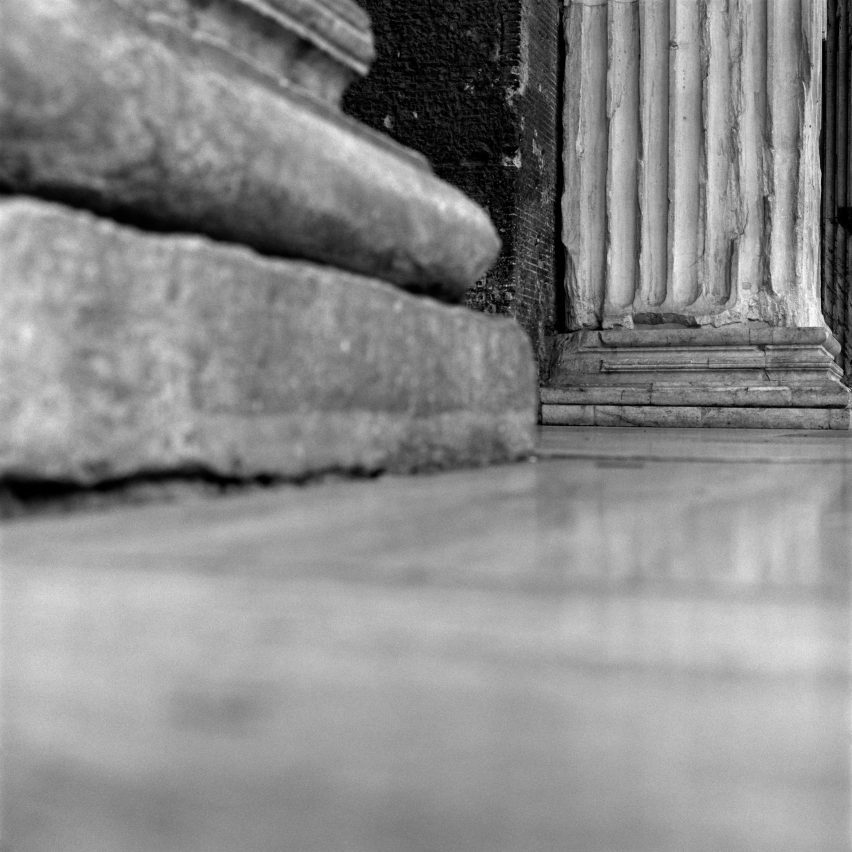
Detail of the pronaos at The Pantheon, Rome, Italy
"The Pantheon was right at the beginning of my career so I feel sometimes very shy to talk about it," Binet said. "This image is about the desire to look at something that is very well known, but often not in an intimate way.
"I wanted to explore the possibility of dismantling – and being in a very personal dialogue with – something that you think you know.
"It is a building that makes light, with its oculus. Its design has a perfect sphere within a cylinder, where you can only imagine the full extent of the sphere and not completely seize it. So my work in my pictures is to support that idea of something you can only imagine, which is a very nice challenge. "
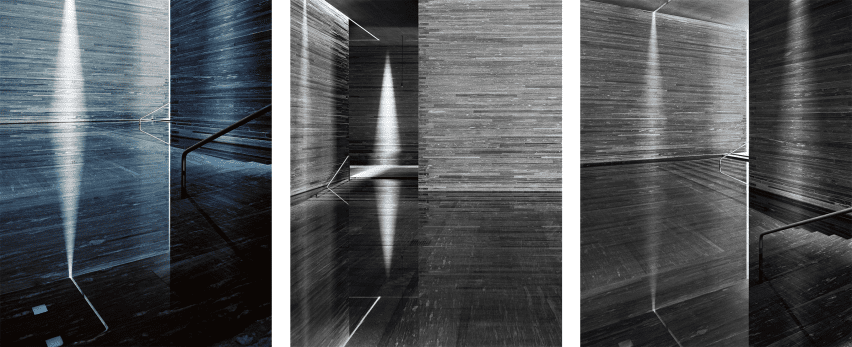
Therme Vals, Vals, Switzerland, by Peter Zumthor
"This triptych of photographs was taken at Peter Zumthor's celebrated thermal baths in Vals, Switzerland," Stierli told Dezeen.
"Each photo is a perfect translation of the architect's unique sensibility to introduce light as an architectural material, which also explains the photogenic quality of his buildings, in the literal sense of the word.
"But beyond that, it is significant that Binet thinks of these images in terms of a sequence, which seemingly runs counter to the notion of the singularity of the image. The Vals triptych is the perfect demonstration that the singular presence and plurality of the image are not mutually exclusive, but rather enhance each other."
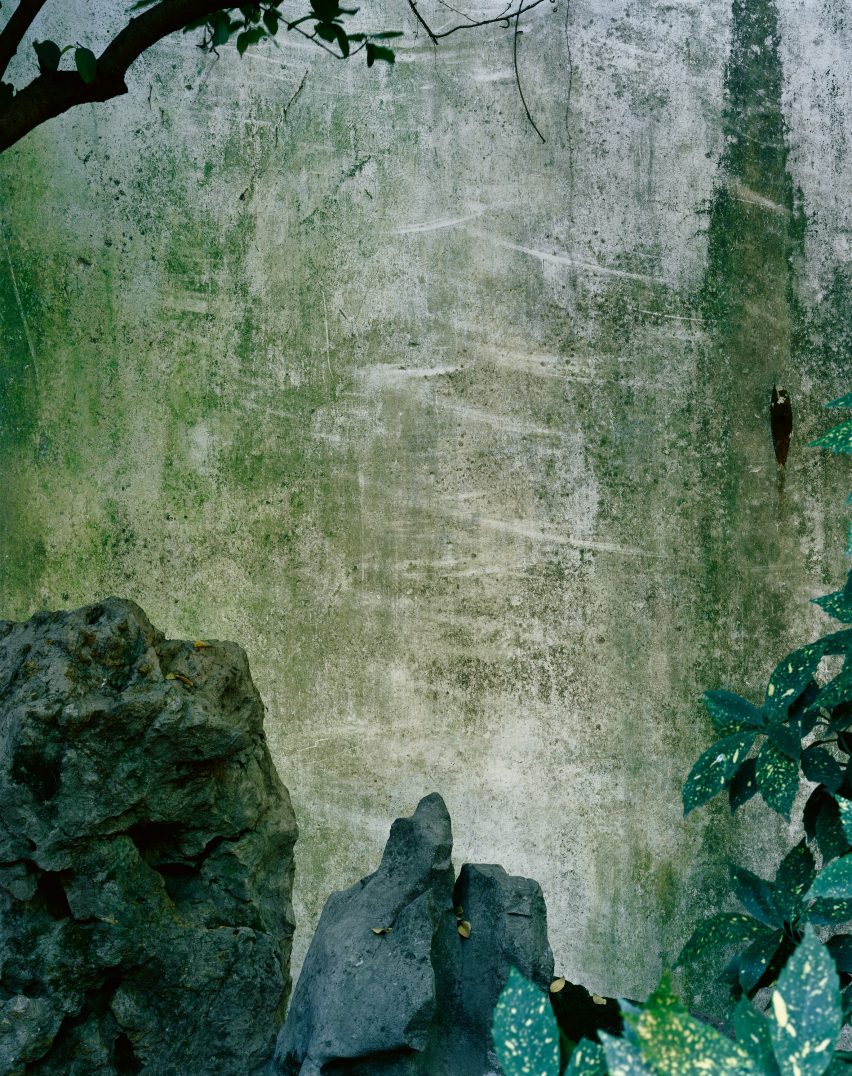
The Lingering Garden, Suzhou, China
"This image of a wall of the Lingering Garden in Suzhou, China, goes a step further in transforming the photo into an almost abstract composition of colour, light, and texture," Stierli said.
"The depthlessness of the image, paradoxically, is the prerequisite for substance: the flattening of architectural space into an image creates the ultimate space for contemplation."
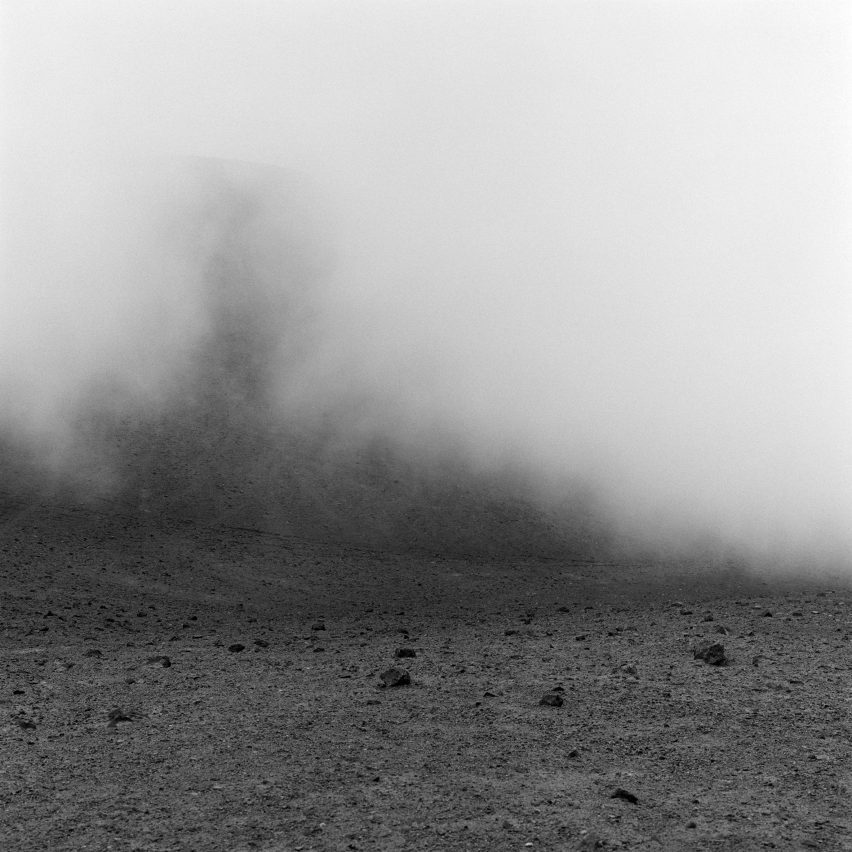
Fog formations, Atacama Desert, Chile
"A series of photos of fog formations in the Chilean Atacama desert is perhaps Binet's most radical departure from conventional architectural photography," Stierli said.
"This photo explores architecture as only a small episode in the inevitable processes of the formation and dissolution of material aggregates.
"Binet understands architecture as part of a larger material ecology, and as an attempt to bridge the divide between the spheres of culture and nature: the human-made artefact is seen in the context of natural processes and of the emergence and dispersal, of formation and entropy; a commentary on architecture's – in the end futile – aspiration to transcend time."
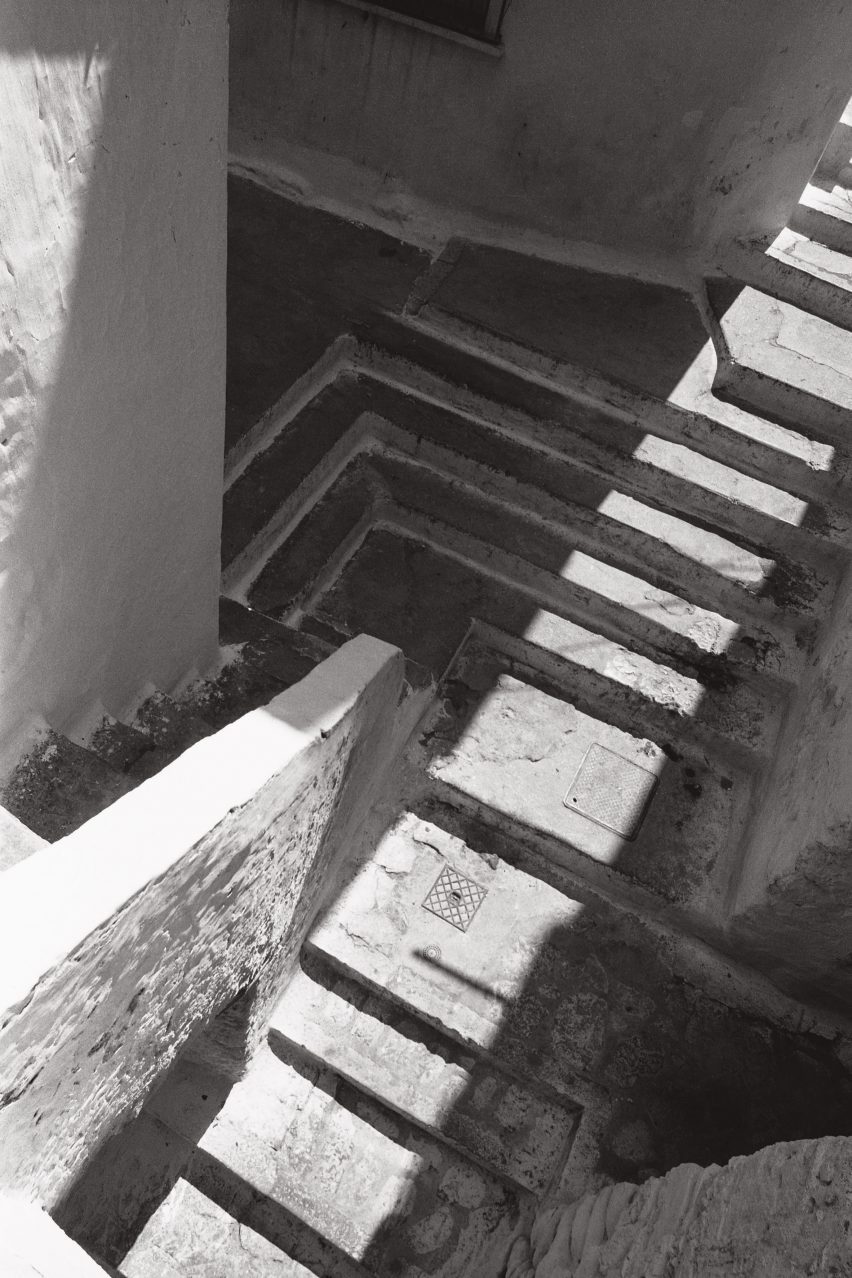
Staircases in Sperlonga, Latina, Italy
"Published for the first time, this intersection of stairs in the coastal town of Sperlonga is an early example of the theme of 'ground' in Binet's work," Iuliano told Dezeen.
"The book is divided into six sections: Traces, Passage of Light, Narratives, Sequence, Abstraction and At Play, which records the imagination of a photographer when completely free from any commitment to a client.
"A theme that I think traverses all the sections is the ground. In her work, Hélène is particularly interested in giving viewers the opportunity to reflect, not only on architecture but, on our relationship with the planet as human beings."
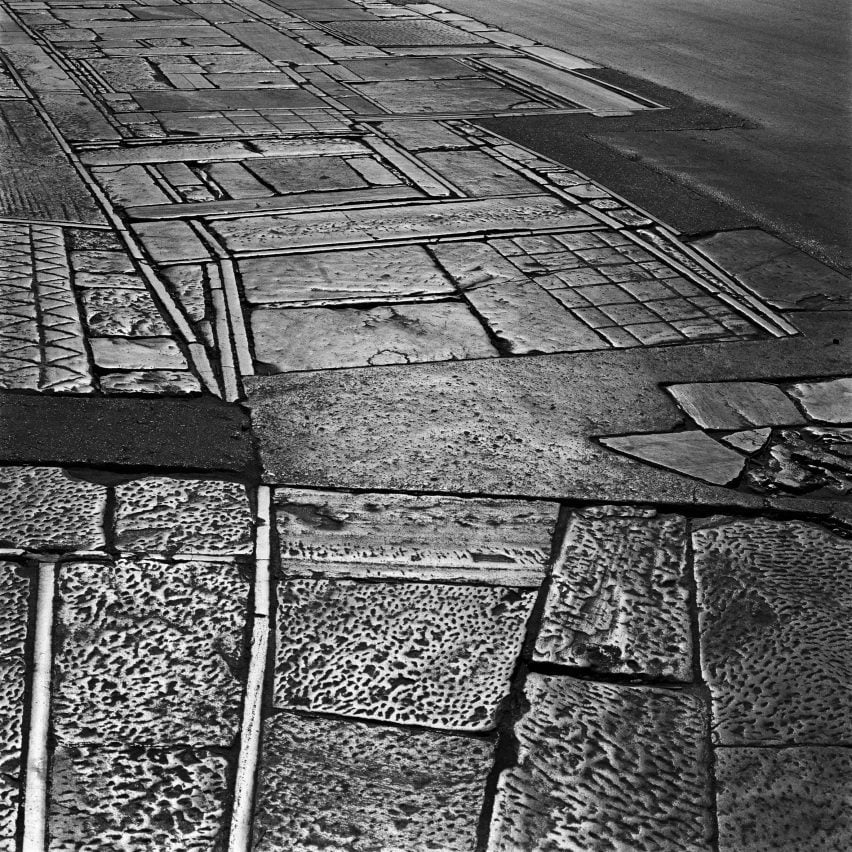
A Sentimental Topography by Dimitris Pikionis, landscaping of the Acropolis, Athens, Greece
"Dimitris Pikionis' pathway leading to the Parthenon in Athens is perhaps Binet's most well-known and paradigmatic photograph," Iuliano said.
"The ground plays a fundamental role in Binet's work, and I found it compelling that, discussing Hélène's work with Kenneth Frampton, he praised her capacity 'to capture in a single image the tactile and textured presence of tectonic form, both in built and natural environments'."
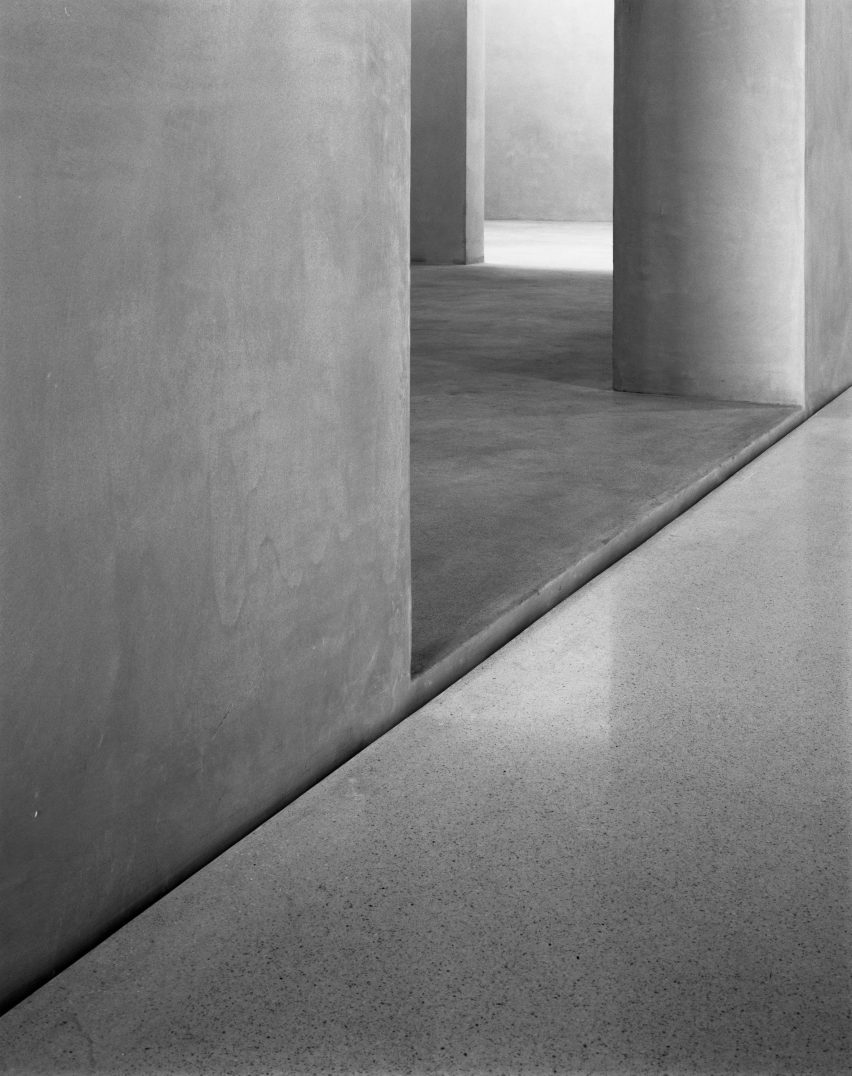
Kolumba Museum, Cologne, Germany, by Peter Zumthor
"Zumthor occupies a position of particular significance in Binet's career and her collaboration with the architect has produced some of the most compelling photographs in her oeuvre," Iuliano said.
"Both Binet and Zumthor are deeply invested in a phenomenological understanding of architecture."
The photography is courtesy of Hélène Binet, unless otherwise stated.